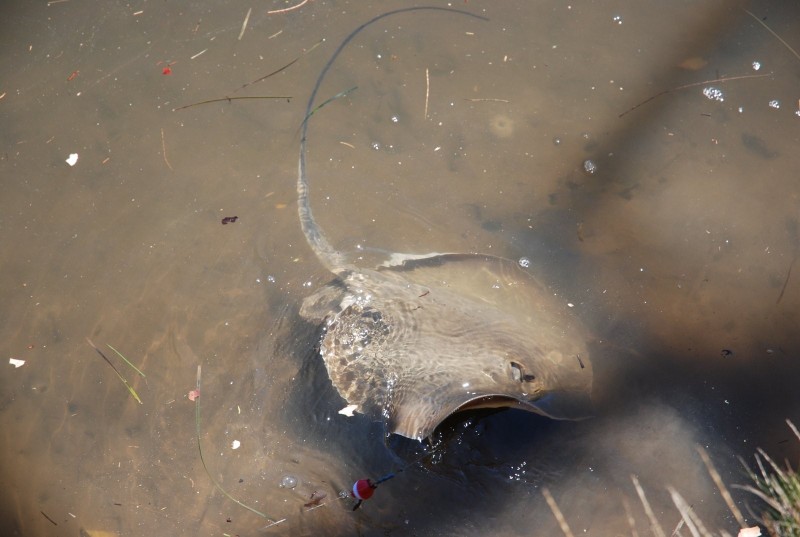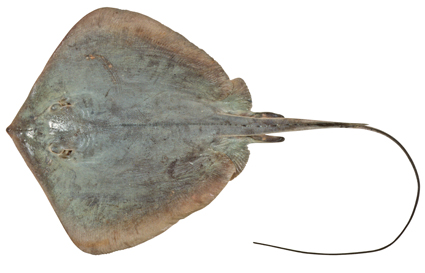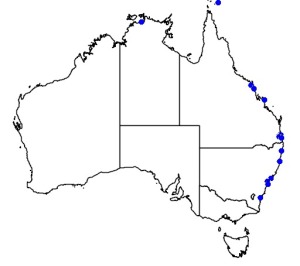Colours
Distinguishing features
The estuary stingray has a diamond-shaped disc about as wide as long. The snout is wide and triangular, and tapers to a point. The tail measures twice as long as the disc, and is broad and flattened at the base. On its upper surface is has at least one, often two serrated stinging spines and a distinctive row of of spines starting at the middle of the back down to the stinging spines.
Size
- Up to 130 cm (TL)
- Up to 93 cm (Disc Width) - applies to Disc Width
Depth range
- From 0 m to 28 m - applies to Occurs most commonly in shallow depths but has been recorded to 28m
Synonyms
Comments
The Estuary Stingray is listed as Vulnerable by the IUCN.
by Damon Bolton
Distribution
Distribution and habitat preferences
Tidal rivers and the intertidal flats of estuaries and bays, which are lined with mangroves and have sandy to muddy bottoms. This species is rarely found outside sheltered areas, though it has been recorded to a depth of 28m in offshore waters. It inhabits marine, brackish and may be able to tolerate fresh water.
Web resources
Danger
- requires treatment - Although the Estuary Stingray has serrated stinging spines, such stings are very rare.


